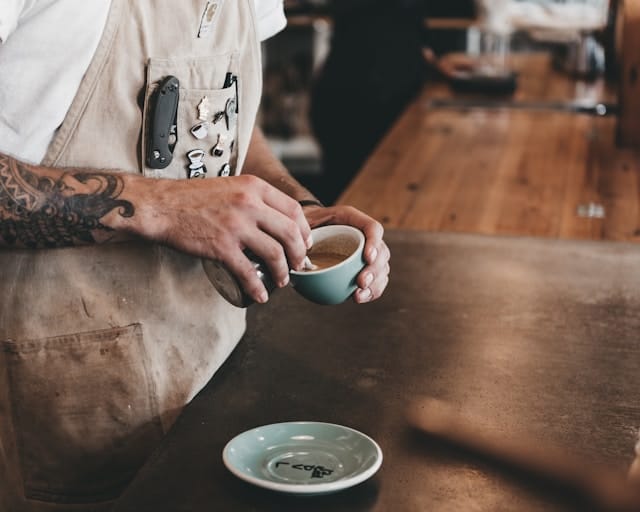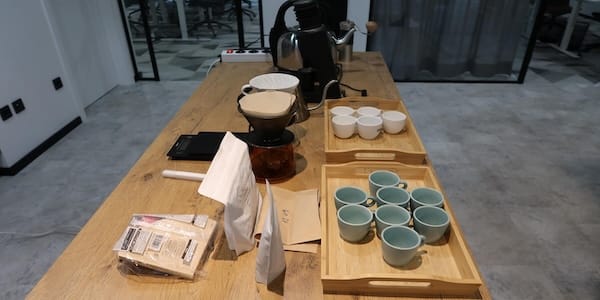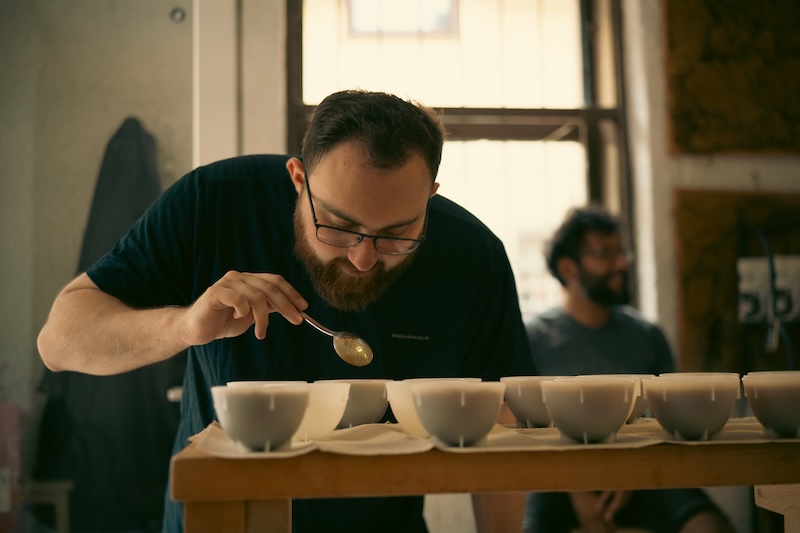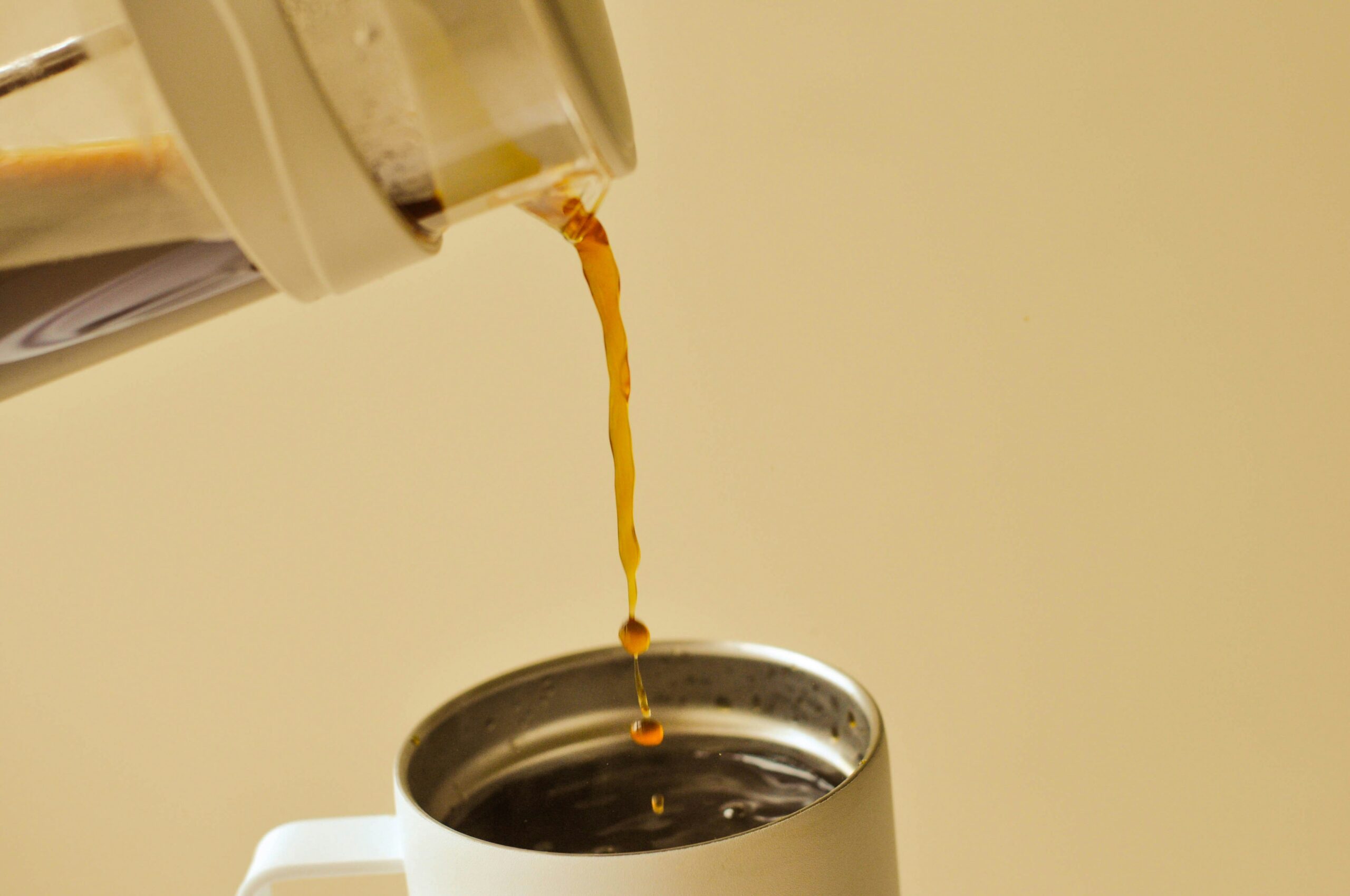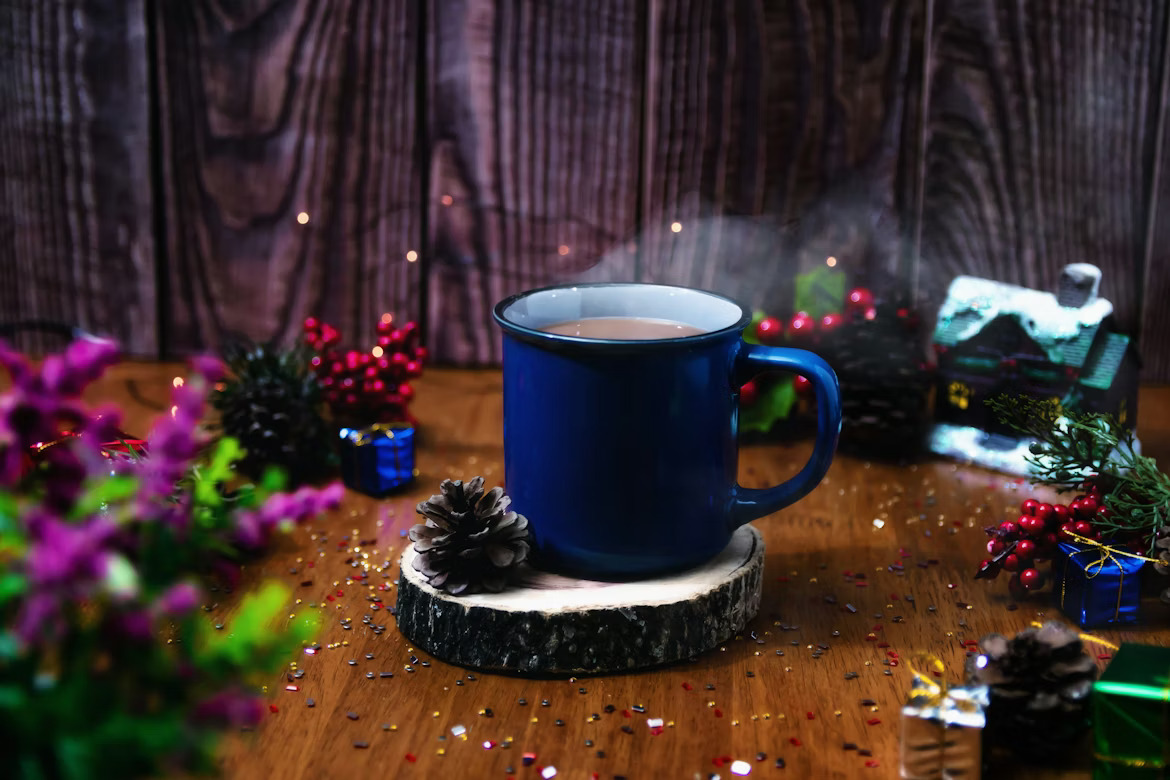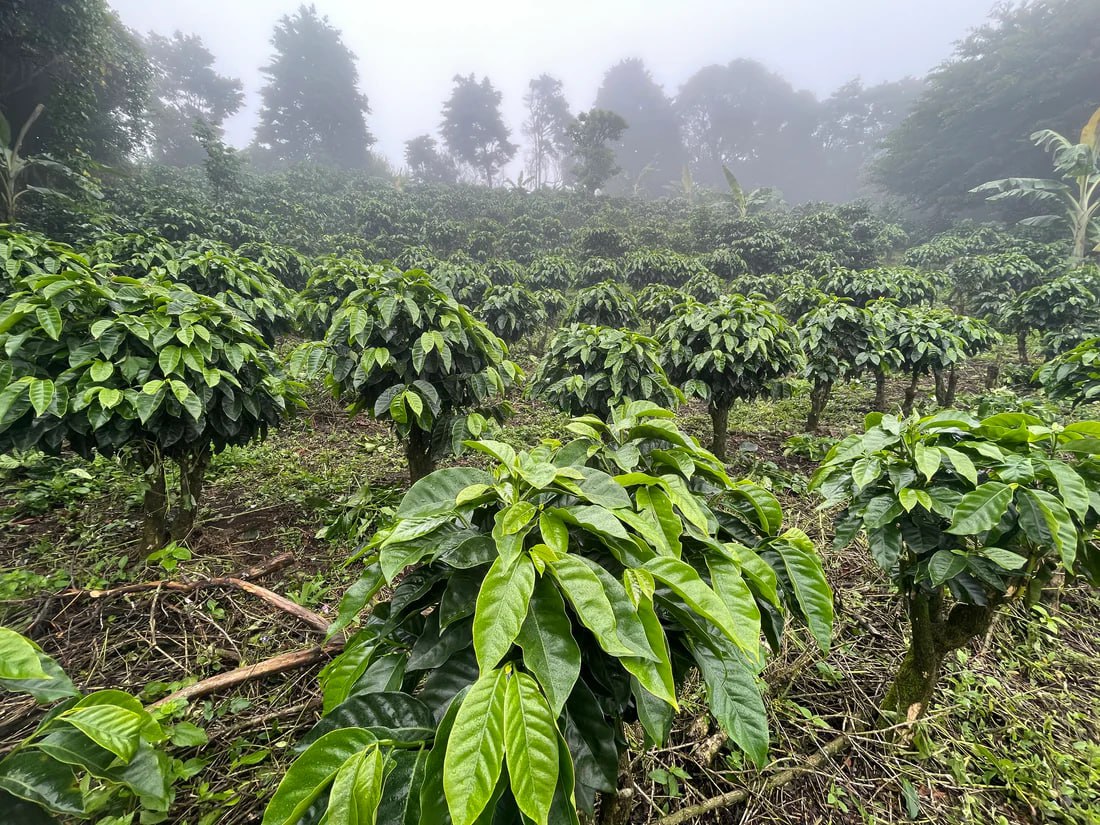ALL POSTS
ALL POSTS
Explaining Coffee Cupping
9 min read
Last edit: Jul 9, 2025
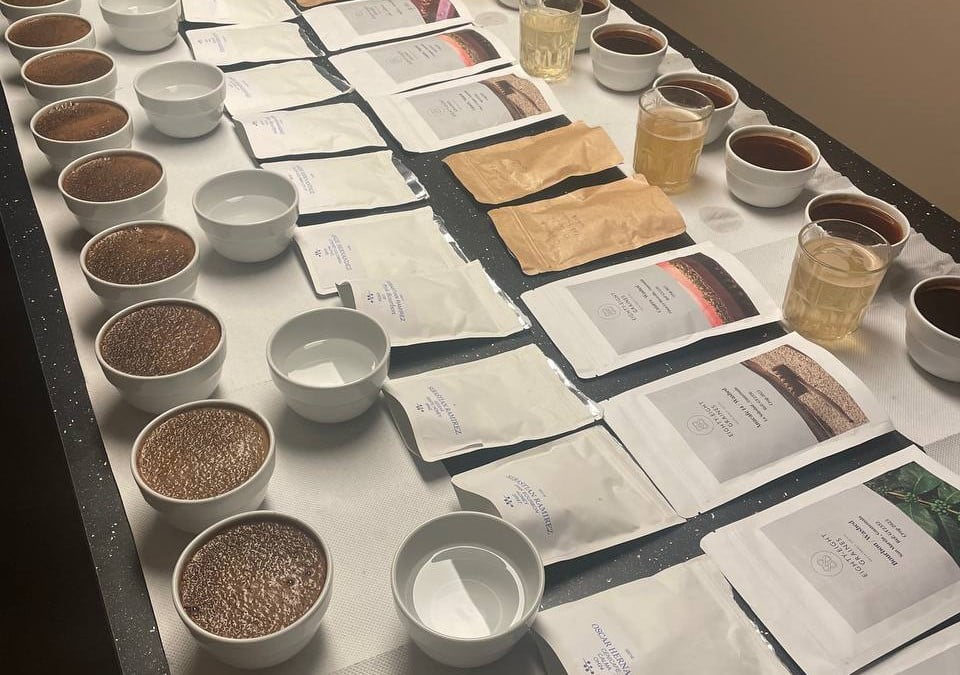
Coffee is prepared in so many ways: concentrated and robust espresso, tea-like v60 and smooth cold brew.
Yet, there is one method of coffee tasting that is by far the easiest to execute in any environment.
The same method is used for coffee quality control, which is an integral part of decision-making regarding what coffee to buy.
In this article, we will be diving into the coffee tasting process of cupping to explore what that is and why professionals of the coffee industry use it specifically for decision making and quality evaluation.
What is Coffee Tasting (Cupping)?
Essentially, cupping or cup-tasting is a process of extracting coffee with an immersion method using nothing else but coarsely ground coffee, almost boiling water and a vessel to hold a brew.
Coffee producers, Baristas, Roasters, Q-graders, and other coffee professionals widely use cuppings to evaluate the quality of the coffee, describe the flavor profile, and maintain the consistency of the production roasts.
The description of aromas, flavours, and other characteristics are done using the World Coffee Research Lexicon and Coffee Flavor Wheel.
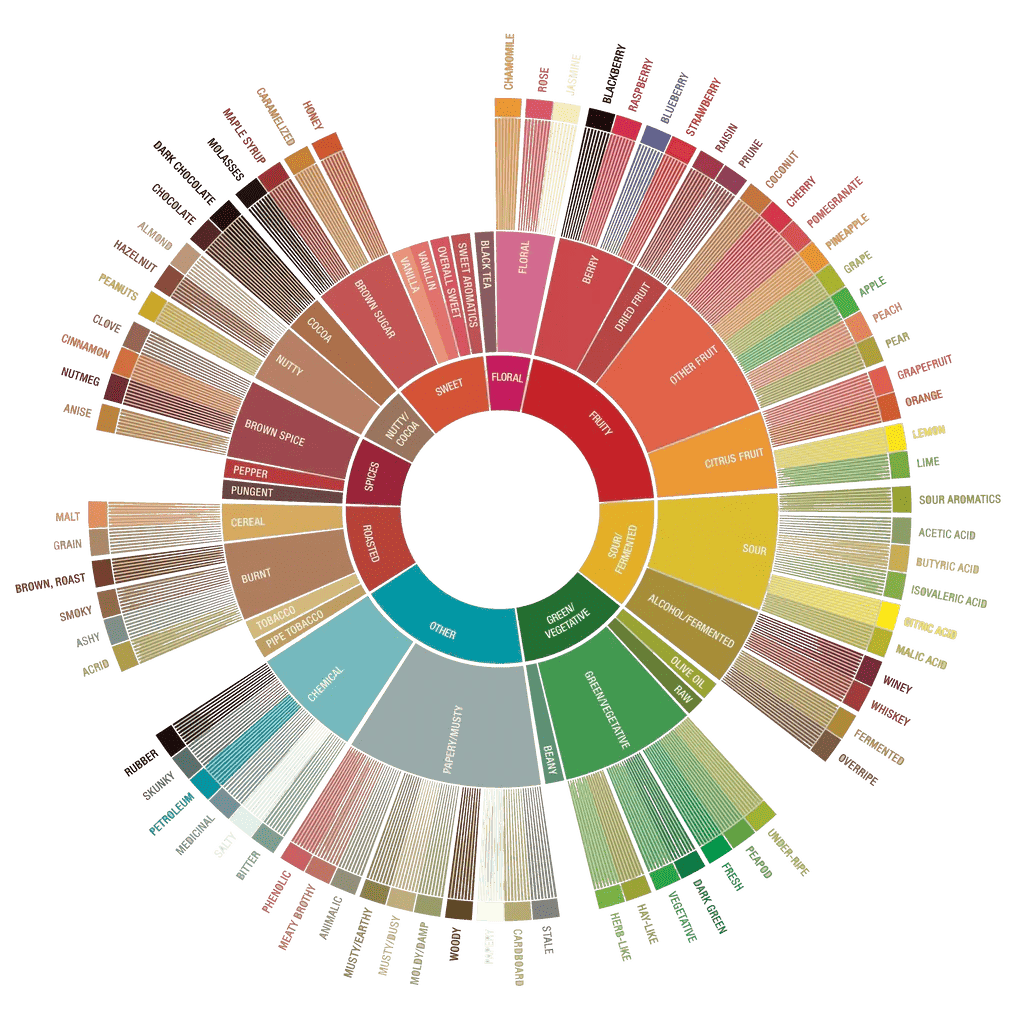
Coffee Tasting Wheel
This ensures that all members of the tasting panel are using the same kit of terms and descriptors to explain their experience with the coffee.
During coffee tasting notes like citrus fruits, chocolate, apple and others are used to describe the flavor of the cup. It is important that all members of the panel use the same lexicon to describe the same associative experiences.
This takes time as to use these tools a cup-tasters first has to be calibrated and trained according to the up to date industry standards.
Special coffee tasting classes are held regularly both for professionals and enthusiasts anywhere you can find a strong coffee culture present.
During these classes attendees learn about the nuance of coffee flavor and aroma, and are trained in the coffee tasting protocols.
One of the more important goals of each such coffee tasting class is to prepare cup-tasters for the environment in which they will be working so that they do not allow mistakes caused by outside influence.
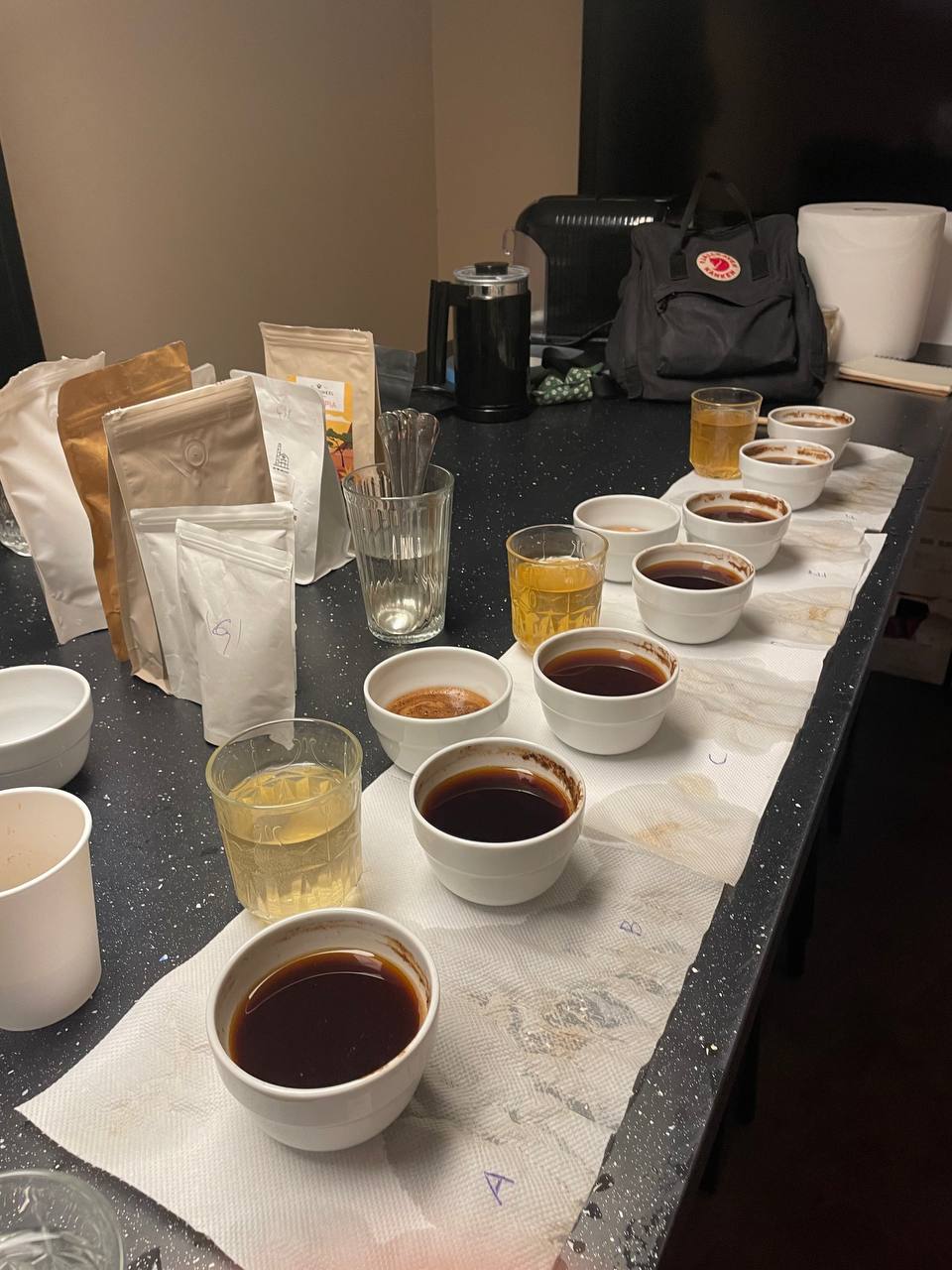
Cup-tasting sessions are also used for making purchase decisions by all the actors of the industry, such as green coffee buyers and traders, roasters and in some cases coffee shops.
Organizing a cupping table allows you to not only try a number of coffees quickly but also check the uniformity of the batch.
Finally, one of the World Coffee Events championships are done in what is called a multiple triangulation.
Basically the Cup-tasting Championship is a find-an-odd coffee challenge. But competitors are also timed to see not only who is the most accurate but the fastest as well.
Unlike espresso tasting cupping is much more easy to replicate since the protocol is universal and the extraction does not depend on the technique of a barista.
How to Set up a Cupping Session?
So how does one set up a cupping session? Here is our step-by-step guide towards assembling your cupping table. In this case, we are assembling an open hedonistic cup-tasting.
First up, the inventory:
- Cupping bowls or a set of identical cups or mugs, ideally that can hold up to 220 mls of liquid. We recommend using the set by Barista Hustle.
- A kettle, ideally with a display that allows you to choose and control water temperature.
- Cupping spoons. Or any other kind of spoon. The specialized ones are genuinely more handy to use though.
- Coffee beans.
- A grinder.
- Paper towels or tissues
- Cups or jugs with water.
- Scale
- Timer
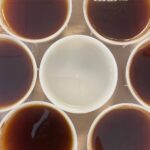
Secondly, the procedure:
- Prepare a table by putting paper towels or tissues on it. You will need to not make a total mess of your table while cup-tasting.
- Heat the water to anything between 90 to 96 Celsius.
- Grind from 12 to 14 grams of coffee and put each lot into a separate empty, clean and dry cup. The most widespread brew ration for cup-tasting procedures is 5,5gr per 100ml. Remember that when putting the water into ground coffee the ground will expand by soaking water.
- Put the coffee packs behind the cups with the corresponding coffee. That will allow you to check which coffee you are experiencing. This is called open cupping, meaning that all the information by the producer or roaster is open to a taster.
- Put the spoons in a jug or a cup with water to keep them clean.
- Find a place on a table filled with water cups, jugs or glasses. These will be used to clean the crust on cups with coffee that will be forming after introducing grounds to water. This is done with two spoons. it is very important to keep the spoons clean in between the cups of coffee to not cross-contaminate.
- Prepare a timer. At the moment of introduction of water to coffee grounds, the timer must be started.
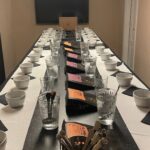
After filling all the coffee cups with water, wait until 4 minutes on the timer.
Upon 4 minutes, take a clean spoon and start breaking the coffee crust by putting a spoon slightly in and gently swirling the crust around. It is recommended to feel the aroma that is released from under the crust. Clean the spoon and continue with breaking other cups with rinsing the spoon in water after each one.
When the crust is broken on every cup take another clean spoon and start gathering the rest of the crust and foam by skimming the coffee surface. Do that as gently as possible to not disturb the coffee ground on the bottom of the cup. Dispose the gathered slurry in one cup and rinse spoons in a vessel with clean water. Repeat until all the cups are cleaned.
Check the timer. Upon 10 to 12 minutes you can start tasting the coffee.
Use a clean spoon to try the coffee beverage by slurping it. That makes a liquid coffee into spray, covering more receptors simultaneously. This , however, is not a must-do thing so do not worry if you don’t feel comfortable slurping in the presence of other people.
Rinse the spoon in clean water after each time you try the coffee.
It is also common to spit the coffee out into a spittoon after experiencing it to not get over caffeinated.
Do not forget to taste coffee at different temperatures, since the higher the quality , the more complex the flavor profile will be.
It is important to fixate water temperature And composition, coffee dose and grind setting used so that your sessions will only differ by coffee used.
What is Cupping Used For?
Predominantly, tasting coffee in a cupping session is used for achieving following objectives:
- Quality Control and Evaluation
- Decision Making
- Sensory Training
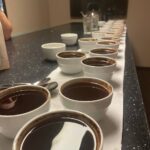
Quality control in the coffee industry is essential.
For roasters, to ensure the consistency of roasting profiles, blends, and overall flavor of coffees in the collection. For coffee shops, to maintain a standard of flavors served to customers.
Cup-tasting procedure is considered the best way to evaluate quality since its results cannot be affected by outside interference. When done by protocol, the cupping is ideal for a trained and calibrated panel of tasters to score the coffee.
There are several methods of coffee evaluation that are considered as standard practice, such as the Coffee Value Assessment protocol (CVA) that was released by SCA. Testing coffee for quality is a profession in its own right and is represented best by Q-Graders. These coffee professionals dedicate years of practice and study, as well as sensory training, to evaluate coffee quality.
Attributes like acidity, body, balance and aroma are evaluated by intensity and quality and given a score. The system of giving scores can differ depending on the protocol used. The status of specialty coffee is assigned to lots that achieved no less than 80 score on average across the tasting panel.
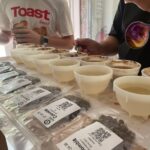
Both business and consumer can choose to use a cup-tasting session in order to make decisions on whether what coffee to buy, what roasting profile to use and which brewing method to pick.
Since the results of steeping coffee in a cup are not minimally influenced by human factors, the brew and its characteristics are considered as most objective. In this way, by tasting the brewed coffee any trained barista or roaster can make educated assumptions on the performance of the coffee in question.
From a consumer’s viewpoint, cup-tasting is the perfect way to try a lot of different coffees fast and with almost zero chance that something will go wrong on a barista’s side.
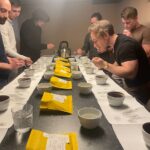
Human senses can be trained in multiple ways, depending what exactly one wants to focus on.
Still, since coffee is a product with an already existing system of scoring, it is easier for a lot of tasters to train within cup-tasting sessions.
Not to mention that coffee itself is very rich with aromatic compounds and can be a lot of fun to calibrate for. Being such a diverse product, coffee flavor profile is influenced by so many factors that it can take years to learn how to recognize and connect a flavor experience with the cause that made it happen.
Using aroma kits like Le Nez du Cafe one can, in due time, be able to describe coffee flavor profile like a true professional.
Evaluatory Coffee Tasting Experience
Being a part of a coffee tasting panel can be both exciting and exhausting. Depending on the goal of a cupping session your experience can be very different. When tasting with evaluation and strict protocol in mind an untrained cup-taster can experience fatigue due to the amount of tasks and information one has to process.
It may sound like an easy task: slurp the coffee and write some notes. In reality, cup-tasters’ job is to register nuances and find differences in coffees and that alone is not easy, especially under the pressure of a ticking clock.
Add to that a task of scaling and noting all into a protocol with multiple attributes and you get an untrivial job. However, when conducting a hedonistic coffee tasting all these issues are almost non-existing and the panel can discover new flavors of coffee at their own leisure.
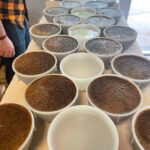
Hedonistic Coffee Tasting Experience
Coffee is for enjoyment, no doubt about that. But the coffee tasting can sound like something serious and demands from a taster to be trained. And it definitely is so if your focus is evaluatory cuppings.
Want to enjoy coffee and discover new flavors? Cup-taste hedonistically! That means that the goal of a session is to, mainly, enjoy the coffees presented on the table. Find favorites and if cupping in the company, discuss the potential and value of coffees tasted.
You still need to execute the preparation according to a standart of your choosing. Maintaining consistency in brew ration, water quality and temperature and grind setting.
Hedonistic cup-tasting can be a lot of fun and doesn’t require a lot of equipment or time to prepare.
Coffee Tasting in Ljubljana
If trying a lot of freshly roasted specialty coffee from local roasters sounds like an experience you would like to get then we are happy to invite you over for a cup-tasting session in beautiful Ljubljana!
Hosted by a Slovene cup-tasting champion 2023 and SCA Sensory Skills Trainer Lev Volodarsky, coffee tasting events are a great way to see what the Slovene coffee scene has to offer regarding the choice of coffee beans and roast profiles.
Attend our Sensory Skills class for all covering class and international certification or take a more step-by-step approach and join our regular cupping sessions.
Learn more about the events and available dates on the dedicated page.
Would you like to learn more about other coffee roasters in Slovenia? Here are the guides.



